Hyundai IONIQ 6 VS Kia Picanto – Specs, Efficiency & Price Comparison
Which model is the better choice – the Hyundai IONIQ 6 or the Kia Picanto? We compare performance (325 HP vs 79 HP), boot capacity (401 L vs 255 L), efficiency (13.90 kWh vs 5.20 L), and of course, the price (37600 £ vs 14600 £).
Find out now which car fits your needs better!
The Hyundai IONIQ 6 (Hatchback) is powered by a Electric engine and comes with a Automatic transmission. In comparison, the Kia Picanto (Hatchback) features a Petrol engine and a Manuel or Automatic gearbox.
When it comes to boot capacity, the Hyundai IONIQ 6 offers 401 L, while the Kia Picanto provides 255 L – depending on what matters most to you. If you’re looking for more power, you’ll need to decide whether the 325 HP of the Hyundai IONIQ 6 or the 79 HP of the Kia Picanto suits your needs better.
There are also differences in efficiency: 13.90 kWh vs 5.20 L. In terms of price, the Hyundai IONIQ 6 starts at 37600 £, while the Kia Picanto is available from 14600 £.
Compare all the key specs now and find out which model fits your lifestyle best!
Hyundai IONIQ 6
The Hyundai IONIQ 6 merges futuristic design with eco-friendly technology, offering a glimpse into the future of electric mobility. Its sleek silhouette and aerodynamic profile are sure to capture attention on the road, while the interior provides a seamless blend of comfort and cutting-edge digital features. With a focus on efficiency and sustainability, this model represents a significant step forward in the evolution of electric vehicles.
details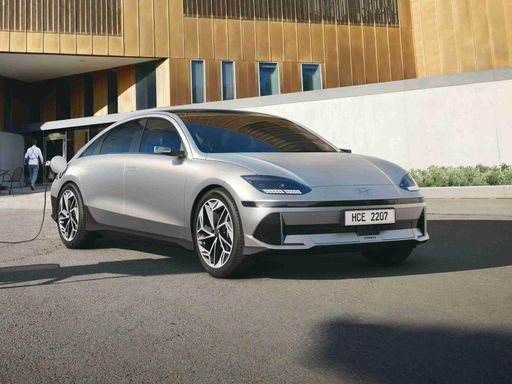 @ hyundai.news
@ hyundai.news
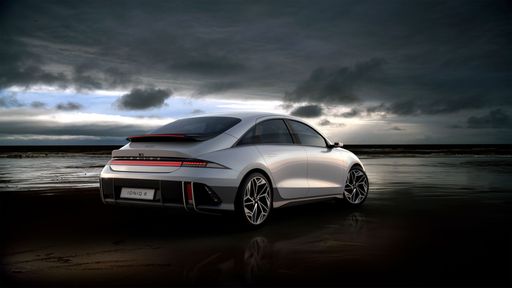 @ hyundai.news
@ hyundai.news
 @ hyundai.news
@ hyundai.news
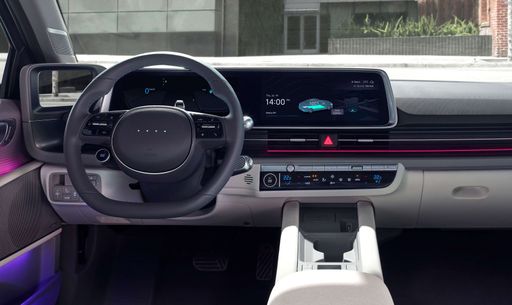 @ hyundai.news
@ hyundai.news
Kia Picanto
The Kia Picanto is a compact city car that combines practicality with a stylish design, making it an appealing option for urban drivers. Its cleverly designed interior maximises space, providing ample room for passengers and luggage despite its small footprint. With its efficient fuel consumption and easy manoeuvrability, the Picanto is well-suited for navigating through bustling city streets.
details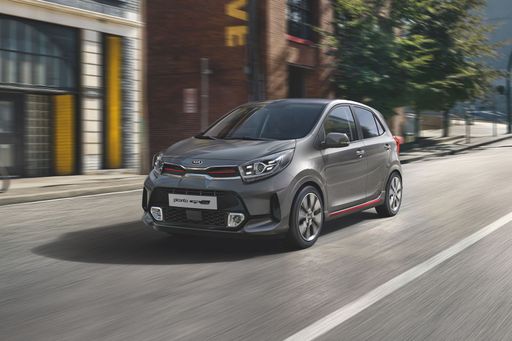 @ press.kia.com
@ press.kia.com
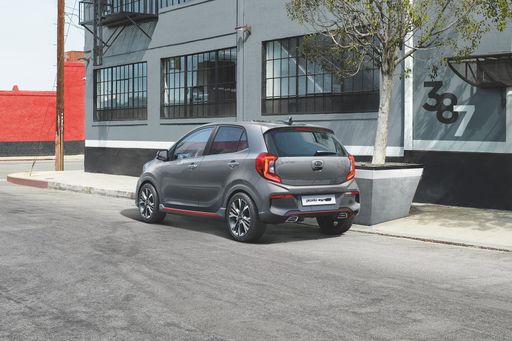 @ press.kia.com
@ press.kia.com
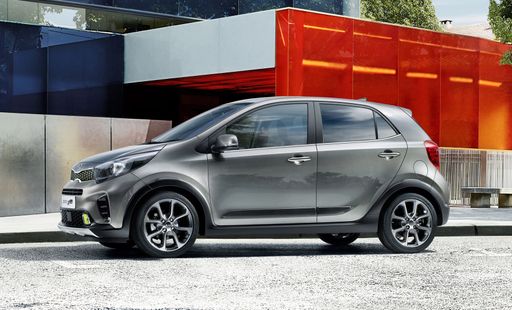 @ press.kia.com
@ press.kia.com
 @ press.kia.com
@ press.kia.com

|

|
|
|
|
Costs and Consumption |
|
|---|---|
|
Price
37600 - 55000 £
|
Price
14600 - 19300 £
|
|
Consumption L/100km
-
|
Consumption L/100km
5.2 - 5.7 L
|
|
Consumption kWh/100km
13.9 - 15.1 kWh
|
Consumption kWh/100km
-
|
|
Electric Range
429 - 614 km
|
Electric Range
-
|
|
Battery Capacity
53 - 77.4 kWh
|
Battery Capacity
-
|
|
co2
0 g/km
|
co2
118 - 130 g/km
|
|
Fuel tank capacity
-
|
Fuel tank capacity
35 L
|
Dimensions and Body |
|
|---|---|
|
Body Type
Hatchback
|
Body Type
Hatchback
|
|
Seats
5
|
Seats
4 - 5
|
|
Doors
4
|
Doors
5
|
|
Curb weight
1850 - 2095 kg
|
Curb weight
981 - 991 kg
|
|
Trunk capacity
401 L
|
Trunk capacity
255 L
|
|
Length
4855 mm
|
Length
3605 mm
|
|
Width
1880 mm
|
Width
1595 mm
|
|
Height
1495 mm
|
Height
1485 mm
|
|
Payload
425 - 430 kg
|
Payload
339 - 425 kg
|
Engine and Performance |
|
|---|---|
|
Engine Type
Electric
|
Engine Type
Petrol
|
|
Transmission
Automatic
|
Transmission
Manuel, Automatic
|
|
Transmission Detail
-
|
Transmission Detail
Schaltgetriebe, Automatisiertes Schaltgetriebe
|
|
Drive Type
Rear-Wheel Drive, All-Wheel Drive
|
Drive Type
Front-Wheel Drive
|
|
Power HP
151 - 325 HP
|
Power HP
63 - 79 HP
|
|
Acceleration 0-100km/h
5.1 - 8.8 s
|
Acceleration 0-100km/h
13.1 - 18.2 s
|
|
Max Speed
185 km/h
|
Max Speed
145 - 159 km/h
|
|
Torque
350 - 605 Nm
|
Torque
93 - 113 Nm
|
|
Number of Cylinders
-
|
Number of Cylinders
3 - 4
|
|
Power kW
111 - 239 kW
|
Power kW
46 - 58 kW
|
|
Engine capacity
-
|
Engine capacity
998 - 1197 cm3
|
General |
|
|---|---|
|
Model Year
2022
|
Model Year
2024
|
|
CO2 Efficiency Class
A
|
CO2 Efficiency Class
D
|
|
Brand
Hyundai
|
Brand
Kia
|
Hyundai IONIQ 6
Introducing the Hyundai IONIQ 6: A New Era of Electric Mobility
The Hyundai IONIQ 6 is more than just a car; it's a glimpse into the future of electric mobility. With cutting-edge technology, impressive performance, and a sustainable design, this vehicle stands as a beacon for the automotive industry's electric revolution. Let's delve into what makes the IONIQ 6 a standout choice in the rapidly growing electric vehicle market.
Performance and Power: The Heart of the IONIQ 6
The Hyundai IONIQ 6 offers two battery options – a 53 kWh version and a more powerful 77.4 kWh variant. Depending on the configuration, drivers can experience a power output ranging from 151 PS to a remarkable 325 PS, highlighting the versatility of this model. With a maximum torque of up to 605 Nm, acceleration from 0-100 km/h is achieved in just 5.1 to 8.8 seconds, catering to both efficiency enthusiasts and those with a penchant for speed.
Efficiency and Range: Long Journeys Made Easy
One of the IONIQ 6's standout features is its exceptional range. Offering an electric range between 429 km to an impressive 614 km on a single charge, it's designed to go the distance. Efficiency is at the forefront, with energy consumption between 13.9 kWh/100km and 15.1 kWh/100km, ensuring that your driving experience remains as eco-friendly as it is enjoyable. All variants boast a CO2 efficiency class of A, reflecting Hyundai's commitment to sustainability.
Design and Interior: Luxury Meets Sustainability
The IONIQ 6's sleek, aerodynamic design is not only visually stunning but also functional, reducing air resistance to maximise efficiency. Offering a hatchback style, it comfortably seats five, ensuring ample space for passengers and luggage. The interior is crafted with sustainable materials, combining advanced technology with an eco-conscious ethos. With a boot capacity of 401 litres, it seamlessly balances practicality with style.
Technology and Innovation: Driving into the Future
Packed with the latest automotive technologies, the IONIQ 6 integrates the future of driving with present-day conveniences. It features a state-of-the-art automatic transmission with a reduction gearbox that ensures smooth driving dynamics. Its advanced driver assistance and safety systems provide peace of mind on every journey, making it an ideal choice for progressive drivers who embrace technology.
Conclusion: A Competitively Priced Electric Option
The Hyundai IONIQ 6 offers an enticing blend of performance, range, and sustainability. With prices ranging from €43,900 to €64,200, it represents excellent value for an electric vehicle of its calibre. Monthly costs are competitively set between €1066 to €1379, while cost per km ranges between 42.7 to 55.2 cents, appealing to cost-conscious customers without compromising on quality or innovation. The IONIQ 6 is a triumph of modern engineering, making it a strong contender in the electric vehicle market.
Kia Picanto
Compact Versatility: An Overview of the Kia Picanto
The Kia Picanto, with its chic and compact design, is a staple in urban landscapes across the globe. Offering a deft blend of efficiency, style, and functionality, the Picanto continues to evolve, catering to the demands of the modern driver. With the 2024 model year, Kia reaffirms its commitment to providing a small car that doesn't compromise on quality or innovation.
Engine Performance and Fuel Efficiency
The Kia Picanto comes with several engine options tailored to different needs, featuring both manual and automatic transmissions. The engines range from a 1.0-litre 3-cylinder to a 1.2-litre 4-cylinder, providing a power output between 63 and 79 PS. This allows the Picanto to offer a versatile driving experience that suits both urban and suburban environments. Fuel consumption is impressively low, with figures ranging between 5.2 to 5.7 litres per 100 km, emphasising the car's eco-friendly credentials.
Innovative Design and Technology
In terms of design, the Picanto boasts sleek lines and a modern silhouette. Although it's a five-door hatchback, the car maintains its compactness with dimensions of 3605 mm in length, 1595 mm in width, and 1485 mm in height. Inside, the Picanto surprises with its clever use of space, providing a comfortable cabin for up to five passengers and a boot capacity of 255 litres.
The Picanto is equipped with advanced technology aimed at enhancing the driver's experience and safety. Available equipment lines such as Edition 7, Vision, and GT Line offer varying levels of features, including improved infotainment systems and driver assistance technologies. These innovations make the Picanto not just economical, but also a smart choice for tech-savvy car buyers.
Safety Features and Driving Comfort
Safety has always been a priority for Kia, and the Picanto is no exception. The 2024 model comes equipped with a suite of safety features designed to protect its occupants. From enhanced structural integrity to available driver assist systems, Kia ensures that driving the Picanto is both secure and enjoyable. The Picanto manages speed efficiently, with a top range between 145 to 159 km/h, and provides a torque of 95 to 115 Nm, aiding in confident handling and acceleration.
Environmental and Economic Benefits
With CO2 emissions ranging from 118 to 130 g/km, the Picanto holds a D efficiency class. This is a significant factor for environmentally conscious drivers who still want to enjoy an efficient urban vehicle. The monthly cost of ownership is between €681 and €789, with a cost per kilometre of 27.2 to 31.6 cents, positioning the Picanto as an economically wise choice for budget-conscious drivers.
The Final Verdict
Overall, the Kia Picanto remains a formidable contender in the compact car segment, thanks to its combination of practicality, innovation, and efficiency. Whether navigating the bustling city streets or heading out on a weekend road trip, the Picanto proves to be a reliable and economical partner. With its modern styling and cutting-edge technology, it stands as a testament to Kia’s ability to adapt and thrive in the ever-evolving automotive landscape.
The prices and data displayed are estimates based on German list prices and may vary by country. This information is not legally binding.
